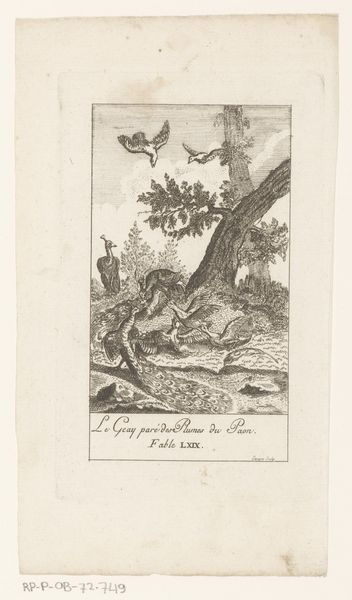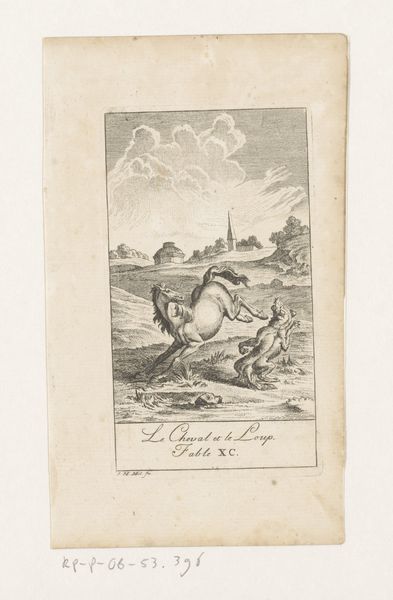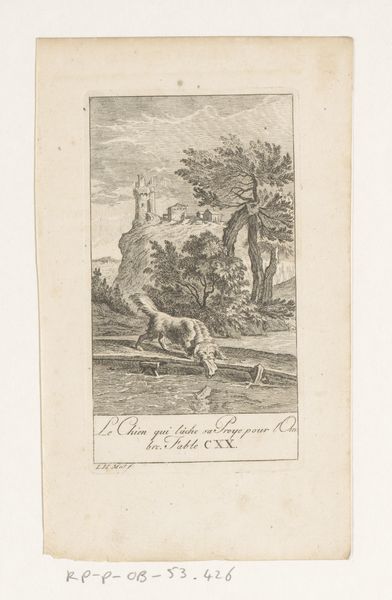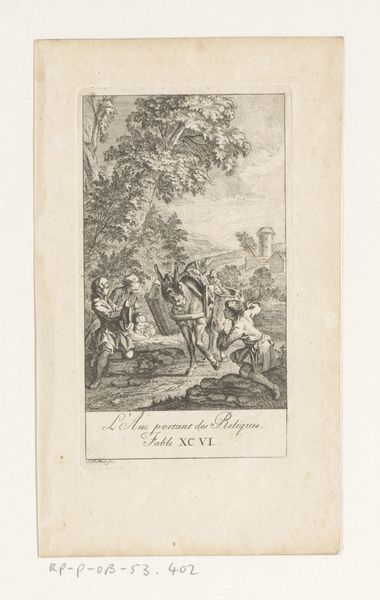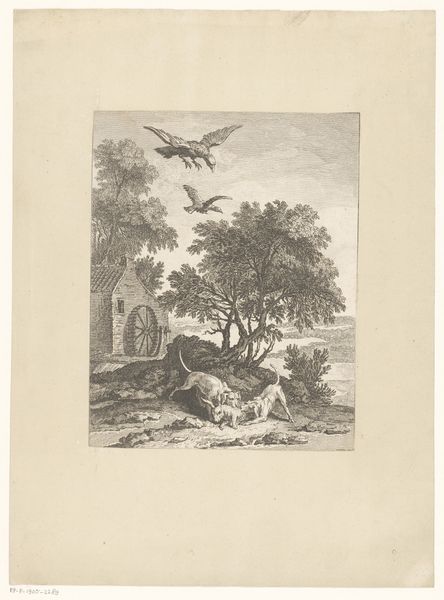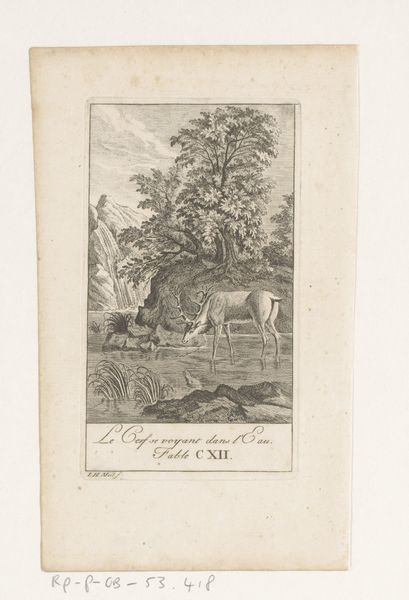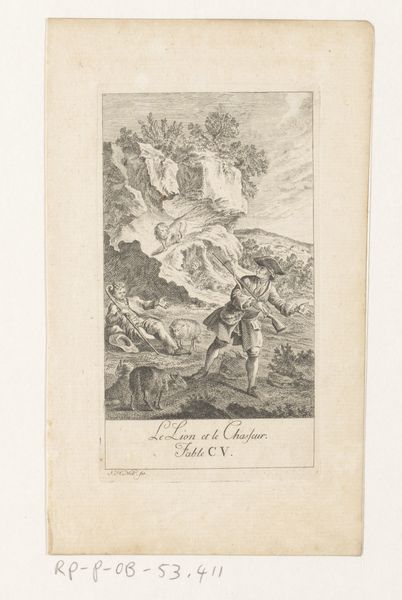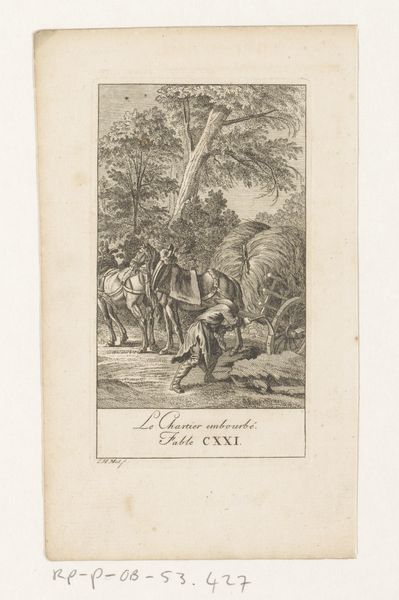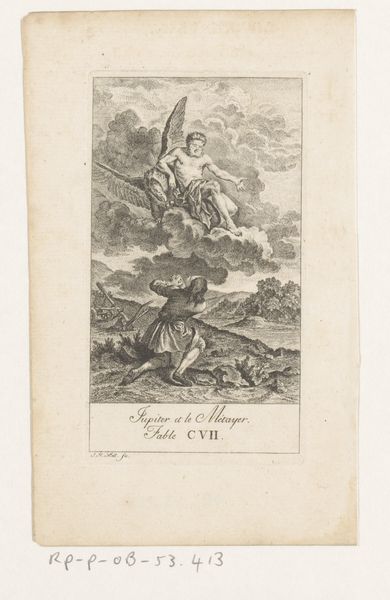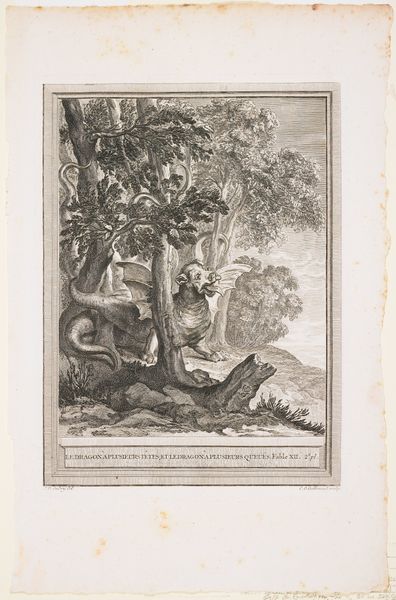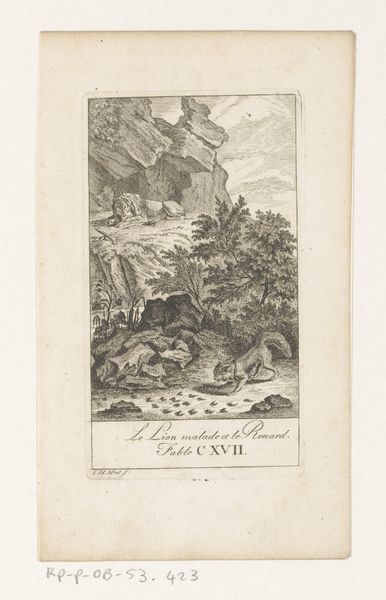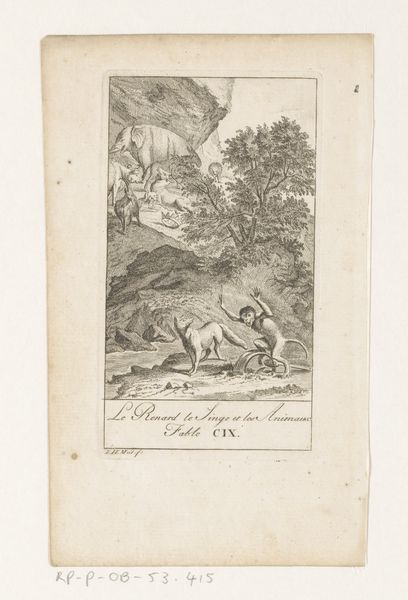
print, engraving
#
narrative-art
#
baroque
# print
#
landscape
#
figuration
#
line
#
genre-painting
#
engraving
Dimensions: height 142 mm, width 81 mm
Copyright: Rijks Museum: Open Domain
Curator: The eye is drawn immediately to the clustered action at the center. It seems to pulse with an odd tension amidst the pastoral setting. Editor: Yes, there's something unsettling about that idyllic scene, wouldn't you agree? Let me introduce what we're looking at. This is "Fabel van de haas en de patrijs," or "The Fable of the Hare and the Partridge," created in 1758 by Johann Heinrich Meil the Elder. It's an engraving, exhibiting fine lines in its depiction. Curator: Precisely. Look at the detail, though limited by medium; the intricate rendering of the foliage is noteworthy, almost vibrating with implied movement. I’m intrigued by how Meil constructs this tension solely through the distribution of light and shadow within a restricted tonal range. The stark, almost graphic contrast creates a certain drama. Editor: The fable itself is important. These narrative works often held social or political allegories, reflecting power dynamics or commenting on societal behaviours of the era. The placement near what looks like a watermill and the birds above suggest a critique of both the rural world and the seemingly inevitable hierarchy—with larger predatory birds symbolizing greater power. Curator: While context is key, the visual language is just as persuasive. The compositional arrangement itself generates narrative impact. The scene invites, then almost rejects us with this tight central altercation. Look at the triangular organization formed by the dogs—all pointed tension! It certainly suggests Meil understands dynamic, directional force. Editor: Indeed. These seemingly simple scenes carried complex layers of meaning, and their interpretation varies depending on the reader. Considering the widespread literacy in the late 1700s and the circulation of imagery in print, visual narratives became central tools of commentary. One wonders about Meil’s target audience and what commentary the scene served to encourage? Curator: Perhaps understanding it is in that tension we spoke of earlier: a fable whose art exists in both message and construction—the two being forever entwined in our observation. Editor: So true. Art historical and visual cues working in unison reveal how meaning surfaces.
Comments
No comments
Be the first to comment and join the conversation on the ultimate creative platform.
